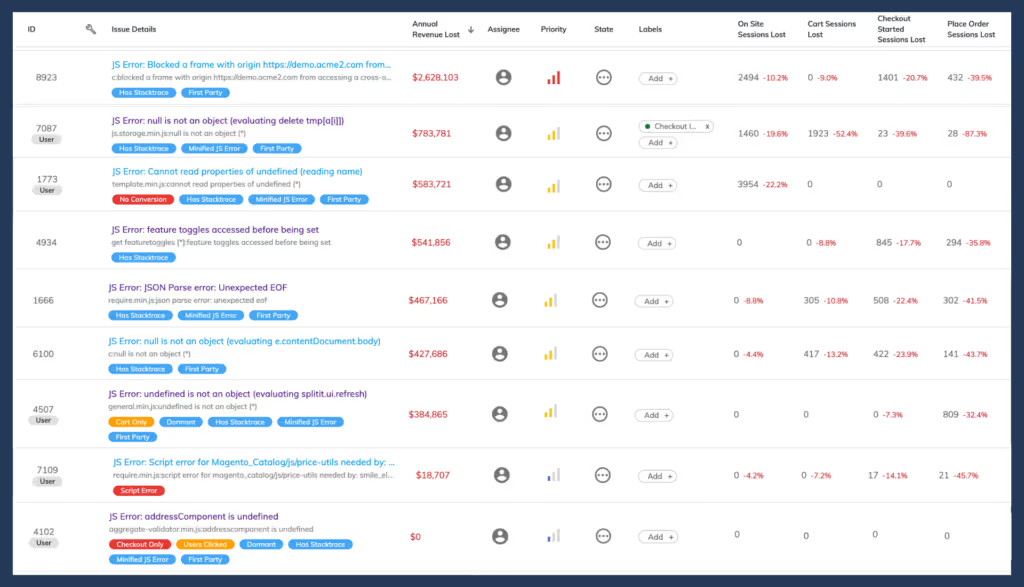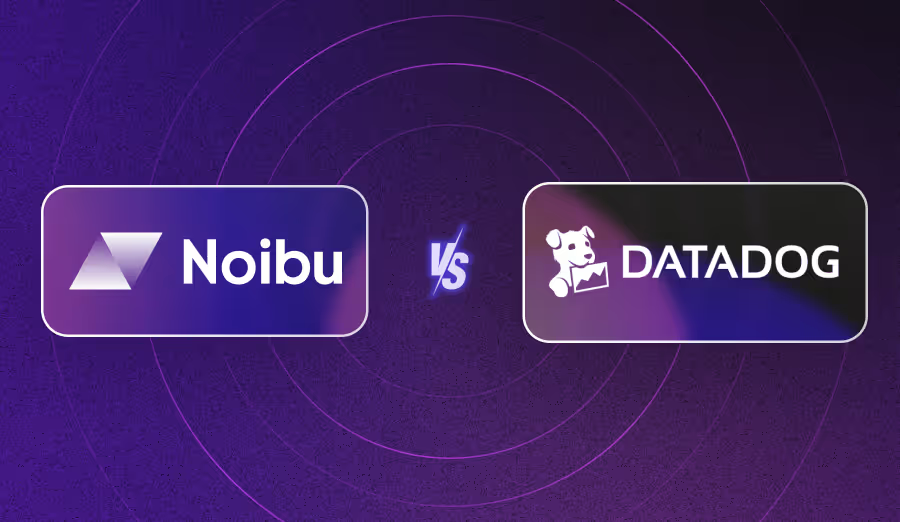Why proper prioritization data is paramount for product teams

Customer patience for problems during their online shopping experience is at an all-time low.
How can product teams use prioritization data to help create a seamless experience and to make their own lives easier?
What is prioritization data?
Within the context of eCommerce site monitoring and error detection, prioritization data is anything that can be used to understand the scope of an error and the overall business impact. It is used by eCommerce and Product managers to better assess which issues need to be addressed first.
What does prioritization data look like for most companies?
Right now, many eCommerce companies look at occurrence metrics to determine which errors are the most severe(or they immediately prioritize founder- or colleague- flagged errors, as was the case with Nudestix). Product and eCommerce teams are using the number of times an error was “seen” to determine which issues have the largest negative impact on the business, but is that really the best way to do this?
From what we've experienced talking with hundreds of eCommerce companies, this is not an effective method to prioritize issue resolutions.
Imagine this scenario:
There are two errors in front of you. Error #1 has occurred to 150 users, and Error #2 has occurred to 10 users.
At face value, you should select Error #1 to work on as it is clearly affecting more people, which should mean it’s more detrimental to the business.
Now imagine that you have access to additional data:
You learn that Error #1, while present on 150 page sessions, does not have an impact on the page's conversion rate.
You learn that Error #2, while only present on 10 sessions, did have a significant impact on page conversion, and those 10 users that were showing high-intent buying behavior cannot complete their purchase journey.
When taking a look at the newly presented information, it’s now obvious that Error #2 should be addressed first as its impacting key business metrics: conversion rates and revenue.
What SHOULD prioritization data look like for all companies?
Rather than looking at occurrence metrics, effective and data-driven eCommerce Product teams need to be looking at an error’s impact to key business metrics to truly understand the severity of an error.
Where occurrence metrics give an idea of severity, analyzing how an issue impacts a page’s conversion rate, and how an issue impacts a company’s ability to collect money from customers, provides the definitive view into issue severity.
This type of business-focused prioritization data is what Noibu focuses on, and what we vehemently believe should be the standard across all product teams.
How does proper prioritization fit into key ecommerce product team responsibilities?
A Product Manager is responsible for A LOT of functions, including needing to ensure that user-facing digital products—such as the website and mobile apps—are all working together as expected.
Unfortunately, it is inevitable that things will go wrong in an eCommerce environment. Being able to immediately detect those issues, and then quickly triage their resolutions based on company-impact, has proven to be a game-changer for product teams.
You can check out this case study to see an example of how access to prioritization data has helped the team at Princess Auto →
Using prioritization data to assess and triage errors
When new errors are detected within an eCommerce environment, Product Managers typically have to look at the list of issues and determine which ones should be resolved first. They often then have to determine the importance of an error fix over other planned projects coming down the pipeline.
Without proper prioritization data, Product Managers have two choices when it comes to deciding what needs to be prioritized. They can either risk making an inaccurate assumption of impact and having the development team work on a resolution that isn’t going to be moving the needle significantly, or they will need to spend time investigating the issue themselves to better understand the impact of it.
Conversely, having the proper prioritization data that highlights an errors impact on page conversion and revenue allows Product Managers to immediately know what errors should be resolved first and whether or not those errors should take priority over other projects in the pipeline. This takes out the subjectivity of error analysis and ensures teams are only working on what actually matters.

Using prioritization data to save time and resources
Having prioritization data collected and clearly displayed also helps Product Managers save on time and resources.
As mentioned above, when new errors get introduced into the eCommerce environment without clear impact data, Product Managers need to spend time investigating each individual issue to get an idea as to its severity. This process is not a quick or painless job, and requires time and energy to be taken away from other projects. In such a fast paced environment where time equals money, every minute of productivity counts.
Now, if this investigation step is skipped, or the wrong data points are analyzed to determine impact, the team runs the risk of asking their developers to spend hours on an error resolution that isn’t mission-critical to the business. By doing this, the product team is also taking key development resources away from that team. This temporary shift in developer focus would be justifiable if the error that is being resolved was creating a major blocker for business metrics. However, without the data to back it up, it’s a guessing game.
With the clear, proper data in place, all teams can make informed decisions about how to spend their time and resources.
Summary
Running a Product team without visibility into key metrics isn’t helpful for anyone. At best it results in time drains and guesswork for your Product Managers, and at worst it causes significant resources (from multiple teams) to be wasted on non-critical activities.
If you’re wanting to run a fast-paced, data-driven team, one that is hyper-focused on the business metrics that matter, proper prioritization data is going to be your best friend.
Noibu offers all this data, and so much more. If you’re interested in further learning about how Noibu’s platform can help your company, check out The Common Challenges Noibu Solves, or send us a message at info@noibu.com




